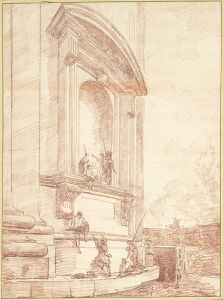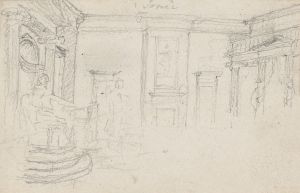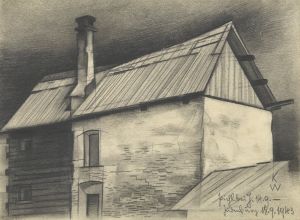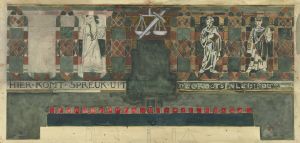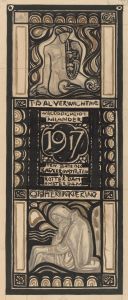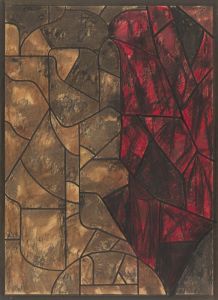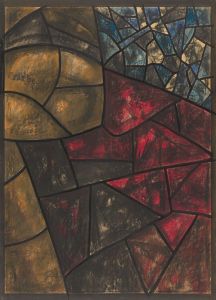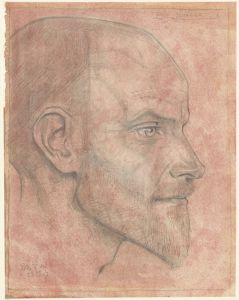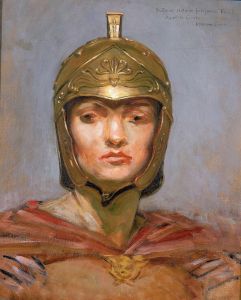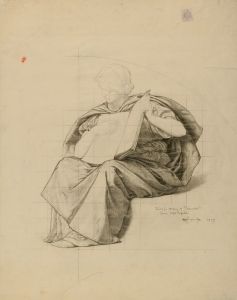
Vierde ontwerp voor marmerdecoratie in de Hoge Raad te Den Haag
A hand-painted replica of Richard Nicolaüs Roland Holst’s masterpiece Vierde ontwerp voor marmerdecoratie in de Hoge Raad te Den Haag, meticulously crafted by professional artists to capture the true essence of the original. Each piece is created with museum-quality canvas and rare mineral pigments, carefully painted by experienced artists with delicate brushstrokes and rich, layered colors to perfectly recreate the texture of the original artwork. Unlike machine-printed reproductions, this hand-painted version brings the painting to life, infused with the artist’s emotions and skill in every stroke. Whether for personal collection or home decoration, it instantly elevates the artistic atmosphere of any space.
Richard Nicolaüs Roland Holst was a prominent Dutch artist known for his contributions to the arts and crafts movement in the Netherlands. He was born on December 4, 1868, in Amsterdam and became a significant figure in the development of Dutch art in the late 19th and early 20th centuries. Holst's work spanned various mediums, including painting, drawing, and decorative arts, and he was particularly noted for his murals and stained glass designs.
One of Holst's notable projects was his involvement in the decoration of the Hoge Raad der Nederlanden (Supreme Court of the Netherlands) in The Hague. Among his contributions to this prestigious building was the "Vierde ontwerp voor marmerdecoratie in de Hoge Raad te Den Haag" (Fourth Design for Marble Decoration in the Supreme Court in The Hague). This work is part of a series of designs Holst created for the interior decoration of the court, reflecting his interest in integrating art with architecture.
Holst's design for the marble decoration in the Hoge Raad is characterized by its intricate patterns and symbolic motifs, which were intended to complement the solemn and dignified atmosphere of the court. His approach to decoration was heavily influenced by the arts and crafts movement, which emphasized the importance of craftsmanship and the integration of art into everyday life. Holst believed that art should be accessible and meaningful, and his work for the Hoge Raad exemplifies this philosophy.
The design itself features a harmonious blend of geometric and organic forms, showcasing Holst's skill in creating visually compelling compositions. The use of marble as a medium adds a sense of permanence and grandeur to the work, aligning with the judicial function of the building. Holst's attention to detail and his ability to convey complex ideas through decorative elements are evident in this design, making it a significant example of his artistic vision.
In addition to his work on the Hoge Raad, Holst was involved in various other public and private commissions throughout his career. He was a professor at the Rijksakademie van Beeldende Kunsten in Amsterdam, where he influenced a generation of artists with his teachings and artistic philosophy. Holst's contributions to Dutch art were recognized during his lifetime, and he remains an important figure in the history of Dutch decorative arts.
Holst's work, including the "Vierde ontwerp voor marmerdecoratie in de Hoge Raad te Den Haag," reflects his commitment to creating art that enhances public spaces and enriches the cultural landscape. His designs continue to be appreciated for their aesthetic qualities and their ability to convey deeper meanings through visual symbolism. Holst passed away on December 31, 1938, but his legacy lives on through his contributions to Dutch art and architecture.





